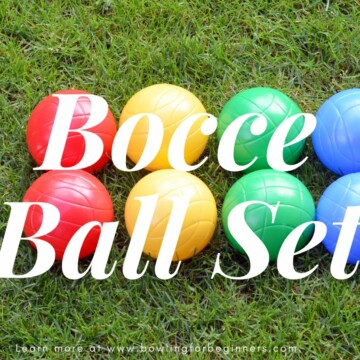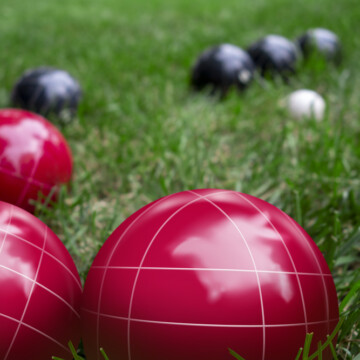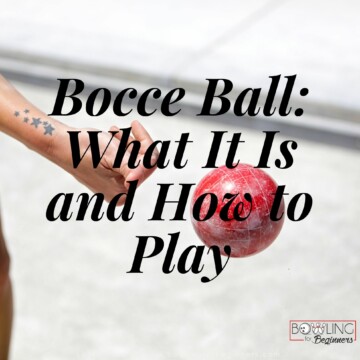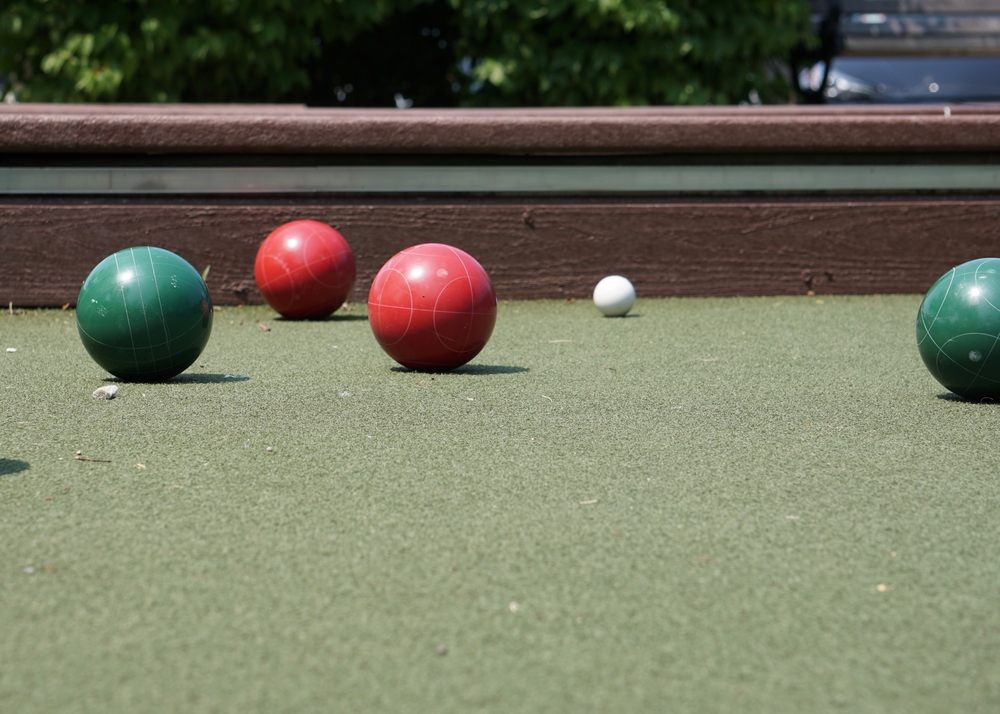
Since you’re here, chances are you've caught the bocce ball bug and are thinking about how you might be able to bring the joy of the game into your own backyard. Whether you've just discovered this timeless pastime or you're an experienced player aiming to perfect your home court, you're in the right place.
In this guide, we'll teach you all the ins and outs of bocce ball courts - from determining the ideal size and creating the best surface to the nitty-gritty of the building process. And if you’re worried about space constraints, don’t worry - we'll also explore how to make a smaller bocce court.
Ready? Let’s get right into it!
What Is a Bocce Ball Court?
A bocce ball court is the official playing surface for the game of bocce, an ancient sport that requires precision, skill, and strategy. It's a flat, rectangular area that allows for the consistent roll of bocce balls, helping to ensure fair play.
Here are the primary components of a bocce ball court:
- Court Shape: A regulation bocce ball court has a rectangular shape.
- Playing Surface: Like lawn bowling courts, the surface of your bocce court should be flat and smooth for a predictable ball roll. Various materials can be used, but commonly, these courts are composed of a combination of compacted stone or clay base, decomposed granite or crushed stone, and oyster shell flour or a synthetic material.
- Side and Back Boards: The court is typically enclosed with wooden boards to prevent balls from rolling out of the play area. These boards also allow players to make bank shots.
- Foul Line: There is usually a foul line on a bocce court, beyond which players must not step when throwing their balls. This line is typically located halfway down the court.
- Drainage: Good drainage is important in a bocce court; it prevents water from pooling on the surface after rain. This could be achieved through a slight slope in the court design or a built-in drainage system (a rocky drainage layer, for example).
- Backstop: Some courts may include a backstop at the ends of the court to stop balls that are thrown with too much force.
Note: These components apply to a typical professional or regulation bocce ball court.
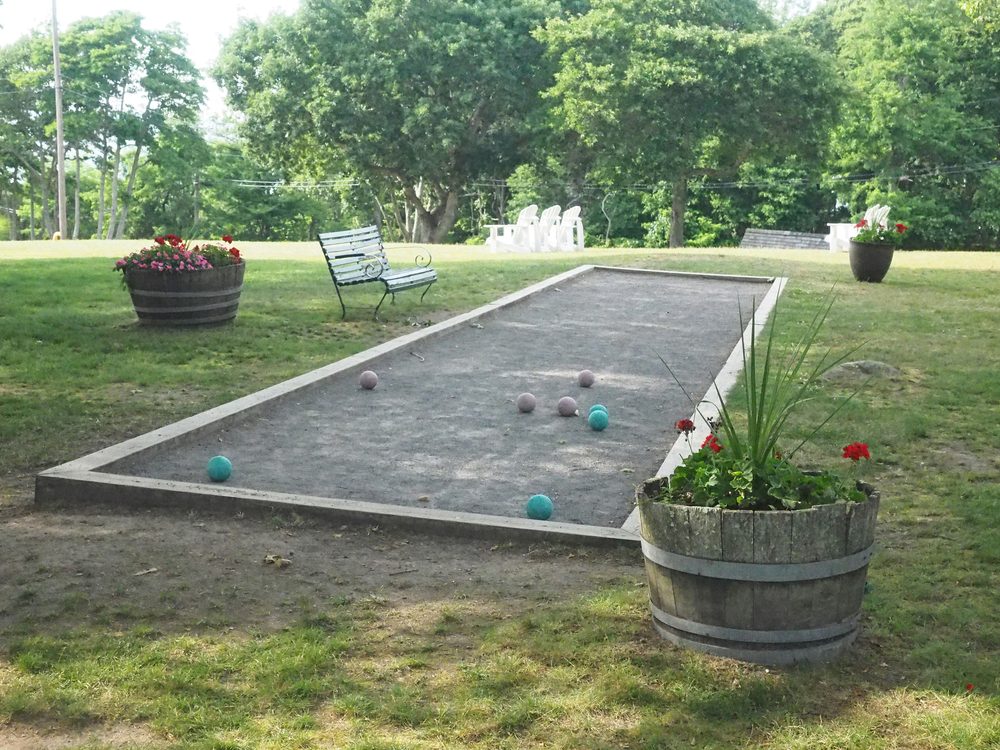
Do You Need a Bocce Ball Court?
Before moving any further, one fundamental question needs to be addressed: Do you actually need a bocce ball court to enjoy the game? The answer, in short, is not really, but having one certainly enhances the experience.
One of the perks of bocce ball is its versatility. The game, in its most rudimentary form, can be played virtually anywhere, from sandy beaches to grassy lawns, and it's common to see casual games of bocce breaking out in parks and backyards without any formal court in sight.
The rules can be adapted to suit the environment, and the equipment required is minimal: a set of bocce balls and good company is all you need.
However, there's something to be said about playing on a dedicated bocce ball court. A bocce court brings an element of consistency to the game. From the predictable roll of the ball on the court surface to the clearly defined boundaries that take any guesswork out of the game.
So, while you don't absolutely need a bocce ball court to enjoy the game, having one can take your bocce ball experience to the next level. It provides a dedicated space for play, adds aesthetic value to your property, and, perhaps most importantly, stands as an open invitation to a great time.
Things to Consider Before Getting a Bocce Ball Court
Building a bocce ball court can be a fantastic way to create a new outdoor space for friendly competition, but there are several key factors you'll need to consider before you get started. Here they are:
- Space: One of the most obvious factors to consider is whether you have enough space. A regulation-size bocce court is incredibly large (more on that later). But even with a smaller court, you'll want to ensure there's enough space around it for players to move comfortably.
- Cost: While a DIY bocce ball court can be a cost-effective alternative to hiring professionals, there's still a considerable cost associated with the project. The expenses can add up between purchasing materials and tools and potentially renting equipment. It's crucial to budget ahead of time. Most bocce courts will set you back a pretty penny.
- Time and Labor: Building a bocce ball court is a labor-intensive project. The process can be quite an undertaking, from excavation to construction and finishing. Consider if you have the time and the physical capability to undertake this project. We’ll dive into the installation process in more detail later on in this article.
- Location: The specific location of your court within your yard matters. You'll want to consider factors like sunlight (will players be squinting into the sun?), drainage (is the area prone to puddles after rain?), and proximity to trees (which could drop leaves on the court).
- Maintenance: A bocce court requires ongoing maintenance to stay in top shape. Caring for your court will include regular cleaning, leveling, and occasionally adding new surface material. Consider whether you're ready to commit to the upkeep.
- Local Regulations: Some local zoning laws or homeowners' associations may have rules about constructing new outdoor features. It's always wise to check any relevant regulations before starting your project.
- Use: Think about how much use the court will get. If you frequently host gatherings or love outdoor games, the effort and expense may be well worth it. If you're not sure, it might be worth trying out the game more casually before investing in a court.
These considerations will help you decide whether building a new bocce ball court is right for you.
Bocce Ball Court Maintenance Steps
Even though bocce ball courts require minimal maintenance compared to other sports courts, it is still crucial to take care of them to extend their lifespan and maintain an optimal playing surface. Here are some key maintenance steps to consider:
- Regular Cleaning: One of the most basic yet crucial steps is keeping your court clean. Regularly remove debris like leaves, sticks, or stones that could damage the surface or affect the roll of the bocce balls. You can use a soft broom or leaf blower for this task. If you have a surface composed of oyster shell flour or similar, you may need to use a special bocce court rake or broom to keep it smooth and free of track marks or divots.
- Weed Control: If your court is outdoors, chances are you'll have to deal with weeds at some point. Weeds can break through it, disrupting the level playing field. Using weed killer or manually removing them when they appear can prevent this issue.
- Leveling: You might notice some low or high spots developing on your court over time. To keep the surface as level as possible, you'll need to fill in these spots with the court surface material and then smooth it out. This can be done with a garden rake or a special leveling rake for bocce courts.
- Adding New Material: Depending on the usage, the playing surface can thin out over time. This is especially true for courts made with organic materials like oyster shell blend. Adding new material every so often will keep the court consistent and maintain the desired speed and roll of the bocce balls.
- Covering the Court: If possible, consider covering your court when it's not in use, especially in adverse weather conditions. This can protect the surface from excessive rain or snow, which could cause damage or make the court uneven. A few tarps will do the job.
- Inspect the Drainage: If your court has a built-in drainage system, make sure it's working properly. If not, you can always build a french drain (basically a trench you’ll dig). A flooded court can cause a host of issues, including an uneven playing surface and potential damage to the court materials.
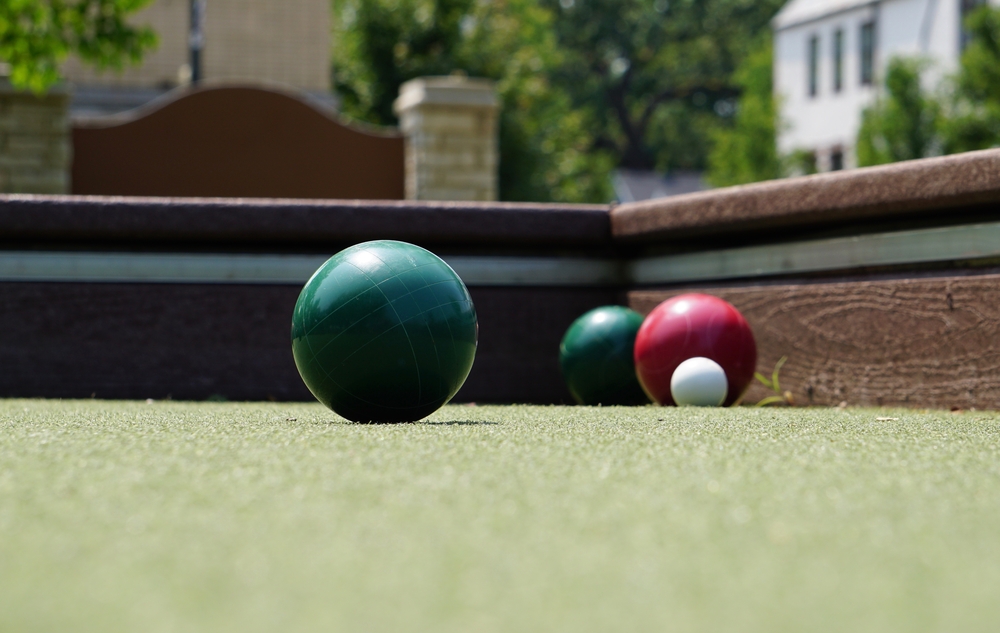
Does Bocce Ball Damage Grass?
Unlike some sports that involve high-intensity running, heavy equipment, or aggressive movements, bocce ball is a relatively slow-paced game. Players generally stay within a confined area and don’t purposely bounce the balls with force. This means that the impact on the grass is usually minimal.
That said, repeatedly playing in the same area can cause some wear and tear over time. If you're playing bocce ball on your grass lawn frequently, you might notice the grass becoming compacted or worn in the areas where the balls are most often rolled. The grass might also show signs of wear from foot traffic, especially along the boundaries of your makeshift court.
If you're concerned about potential damage to your lawn, there are things you can do. Regular lawn care, like watering, aerating, and fertilizing, are a few of them. Ultimately, the occasional game of bocce on your lawn isn't likely to cause significant damage.
However, if you find yourself playing often and want to preserve your grass, it might be worth building a dedicated bocce court in your backyard.
Does a Bocce Court Need to Be Level?
A level bocce court is crucial for fair play and the consistent performance of the bocce balls. Just like in many other games that rely on rolling or bouncing balls, any significant slope or unevenness can heavily influence the direction and speed of the balls. The unevenness could unfairly favor one side or make the game unpredictable.
Bocce ball relies on precision and strategy, with players trying to get their balls as close as possible to the smaller target ball, the pallino. If the court is not level, one player could have an advantage (or disadvantage) based on the way the court slopes. This would take some of the skill out of the game, as players would have to contend with the court's imperfections rather than focusing on their strategy and technique.
For these reasons, when constructing a bocce court, it's vital to ensure the base is as level as possible before adding the layers of materials that make up the court surface. A level will be your best friend during this process, helping ensure that your court is as even as possible. It's worth spending the extra time to get this right.
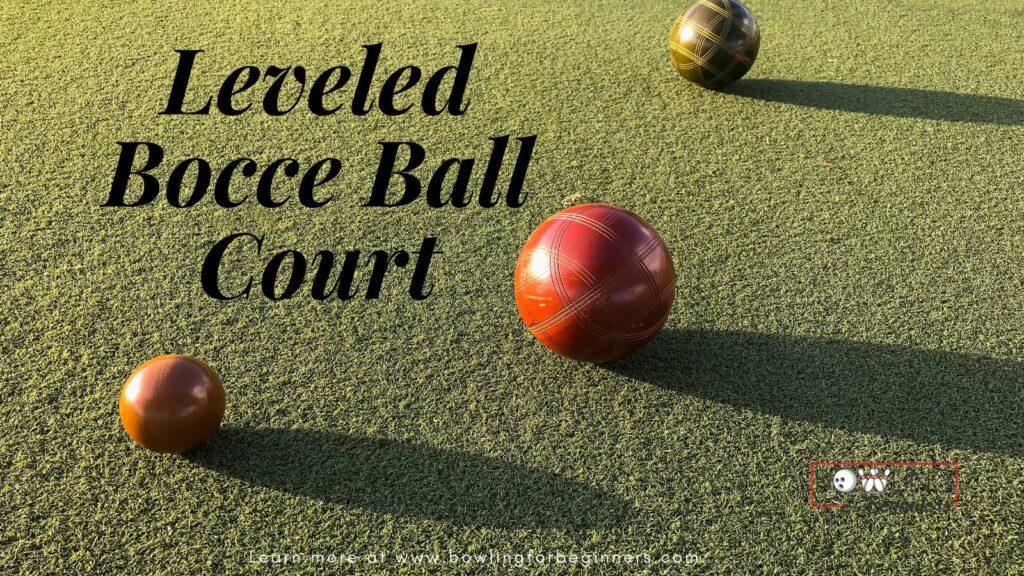
What Size Is a Bocce Ball Court?
A full-blown, regulation-size bocce ball court is a substantial piece of real estate. Recognized by the International Bocce Federation, the official dimensions of a bocce ball court are 90 feet (27.43 meters) long by 13 feet (3.96 meters) wide. This size can provide a spacious playing area that allows for the full scope of strategy and skill to come into play.
It's also the size you'll encounter at official bocce tournaments and in many parks and recreation facilities that have dedicated bocce ball courts. Although 90 feet by 13 feet is the standard size, recreational and backyard courts can vary quite a bit in size. The key is to make sure you have enough space for the balls to roll freely.
A bocce ball court size can significantly differ based on whether you're playing at a professional level, recreationally, or in your backyard. It can be modified to fit your space and needs while preserving the game's fun and competitiveness.
What Is a Good Size for a Backyard Bocce Court?
The beauty of backyard bocce ball is that it doesn't require an Olympic-sized stadium. A popular choice among homeowners is a court that measures around 60 feet (18.28 meters) long by 12 feet (3.66 meters) wide. This size keeps the challenge of the game alive while being more practical for residential settings.
If you're working with a smaller space, don’t worry. A smaller court can still work out perfectly for small bocce-centered get-togethers. Courts as small as 30 feet long by 10 feet wide are ideal for more compact areas.
The essence of the game remains intact; players simply have to adjust their throwing techniques to accommodate the smaller space. It's all about adapting the game to work with what you've got!
What Is the Best Surface for a Bocce Ball Court?
Choosing the right surface for your bocce ball court is key to ensuring a smooth and enjoyable game. You need a firm surface that allows the balls to roll easily but also one that absorbs some of the energy from the thrown balls to prevent excessive bouncing or skidding.
For the highest quality courts, the surface is typically a layered affair. The foundation layer consists of a compacted, crushed rock or gravel, which provides excellent drainage. To keep the weeds at bay, be sure to add a weed barrier (landscaping cloth, ideally).
Above that, add a layer of coarse sand or a crushed oyster shell blend to serve as a middle ground. This layer helps with leveling the court and acts as a shock absorber for the bocce balls.
The final top layer, the one the bocce balls actually roll on, is usually composed of a finely crushed material. A common choice is oyster shell flour or crushed oyster shells. This provides a smooth surface with enough granular texture to prevent the balls from bouncing around too much.
It's important to keep in mind that while these materials are often used in professional court construction, the best surface for a bocce ball court in your backyard might be a simpler, lower-maintenance option. Think artificial turf or even a well-maintained lawn.
Your choice of surface should be guided by your personal preferences, the available resources, and the level of maintenance you're willing to undertake.
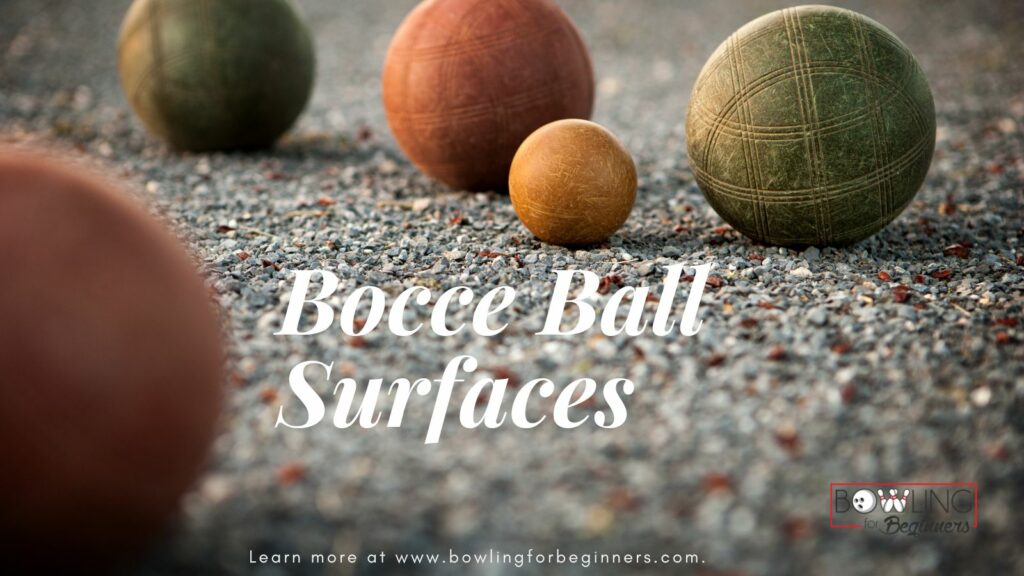
How to Build a Regulation Bocce Ball Court?
Building a regulation bocce ball court on your own involves several steps, but with careful planning and a little elbow grease, it can be a rewarding DIY backyard project. Here are the steps involved in a nutshell:
- Choose the location and mark out the court dimensions: Start by finding the perfect spot for your court. Ideally, you want a flat area that gets a good mix of sun and shade. Once you've found your spot, use marking paint, stakes, and string to outline the court. Remember, a regulation court is 90 feet long and 13 feet wide.
- Prepare the ground: It's time to start digging once your court is marked. Excavate the ground within your marked area to a depth of about 3-4 inches, depending on the size of your court and the type of soil.
- Install the court boundaries: Next, install your boundaries. These can be made from a variety of materials, such as pressure-treated timber, concrete, or stone. They should be sturdy and well-anchored, as they not only serve to define the court but also contain the materials within.
- Lay the base layer: The first layer should be made from a compacted, crushed rock or gravel. It should be at least 2 to 3 inches thick.
- Add a middle layer: Above the base layer, add a layer of sand or a crushed oyster shell blend. It should be another 2 to 3 inches thick.
- Add the top playing surface: The final layer should be a smooth, finely crushed material. Recall that oyster shell flour is a popular choice. Make this about an inch or two thick.
- Mark your lines: Last but not least, use paint or another suitable material to mark the center line and foul lines on your court.
Building your own court is a considerable undertaking, so take your time, plan well, and don't hesitate to ask for help when needed. And have realistic expectations. Don’t be discouraged if your court doesn’t look exactly like the ones on TV or in professional tournaments.
Building a bocce ball court is a DIY project reflecting the uniqueness of your space and personal efforts. The charm, character, and countless memories you'll create while playing on it make your court special.
When DIYing Isn’t the Right Option
You might think that building your bocce ball court is a lot of work. And you’re right! If you think it will be too much for you to take on, you have another option to consider - professional bocce court construction. Get in touch with a construction company for a quote.
They’ll measure your space, price materials, and give you a quote. Just know that you’ll have to come out of pocket thousands of dollars if you don’t want to get your hands dirty.
What are the Bocce Ball rules?
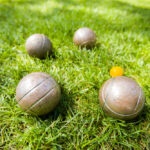
Bocce ball is played with two teams, each with four large balls of distinct colors. The objective is to throw these balls as close as possible to a smaller target ball called the pallino. The game is played in rounds, with one team throwing the pallino and a bocce ball to start.
The opposing team then throws their balls, aiming to get closer to the pallino. Points are awarded for each ball of a team that is closer to the pallino than the closest ball of the other team. The team with the closest ball gets one point, and additional points are given for other balls that are closer. The game continues until a set score is reached, determining the winner.
How to build a Bocce Ball court with artificial turf?
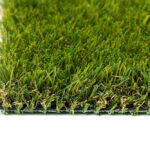
Building a bocce ball court with artificial turf involves site preparation, base installation, artificial turf installation, infill, and compact, court markings, accessories, and final touches. For more detail- here's a quick guide for convenience.
What does a Bocce Ball court cost?
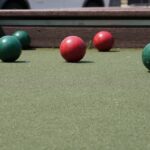
A Bocce Ball court cost can range from a few thousand dollars to exceeding $20,000.
The cost is driven by several factors, including but not limited to surface material costs, construction and labor costs, design and size of the court, and location. For your convenience, we've created a court cost sheet based on the 7 Bocce Ball types of court surfaces.
Related Articles
- Comparison Guide For Bocce Ball and Lawn Bowling
- Bocce vs Lawn Bowling
- How to Play Bowls a Step by Step Guide
- What Bocce Ball and How To Play
So, there you have everything you need to know about bocce ball courts. We hope you found all the information you were looking for, and we wish you the best as you dive deeper into bocce ball.
Kira Byrd, a Certified Fraud Examiner, holds a B.S. in Accounting from the University of Alabama at Birmingham. With a passion for bowling from her childhood, Kira has poured her expertise and personal experiences into creating and nurturing Bowling For Beginners. Kira's mission is to meet new bowlers where they are and guide them toward consistently achieving higher scores. With a focus on skill development and strategic techniques, she empowers readers to take control of their game and unlock their true potential.
Bowling For Beginners embodies strict editorial integrity, ensuring reliable and unbiased information. Kira's commitment to delivering valuable insights and practical strategies is reflected in every article. Here's an explanation of our editorial policy and how we get money.


